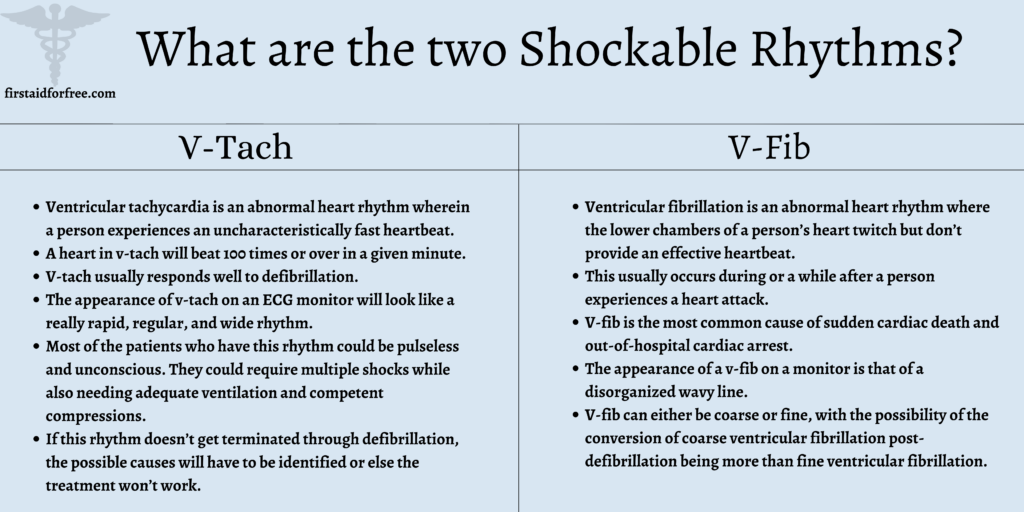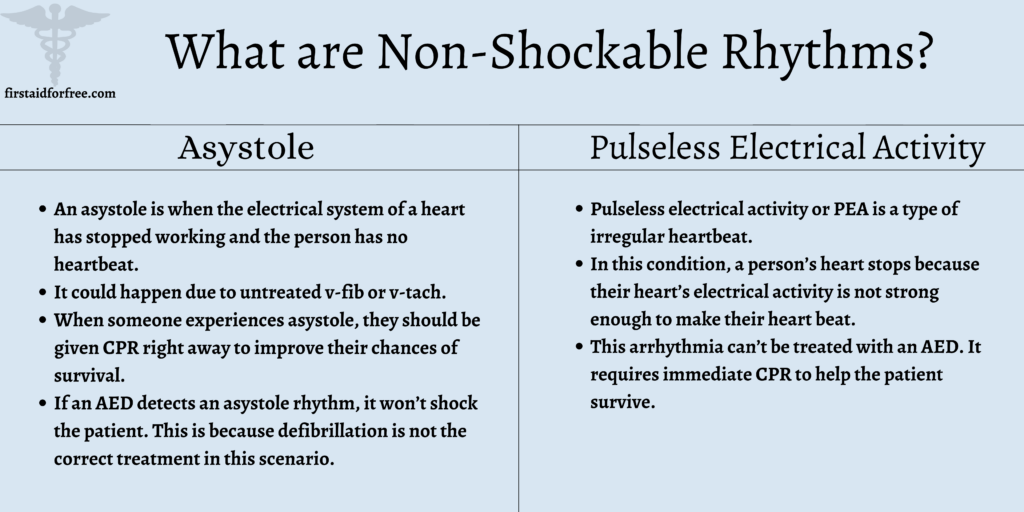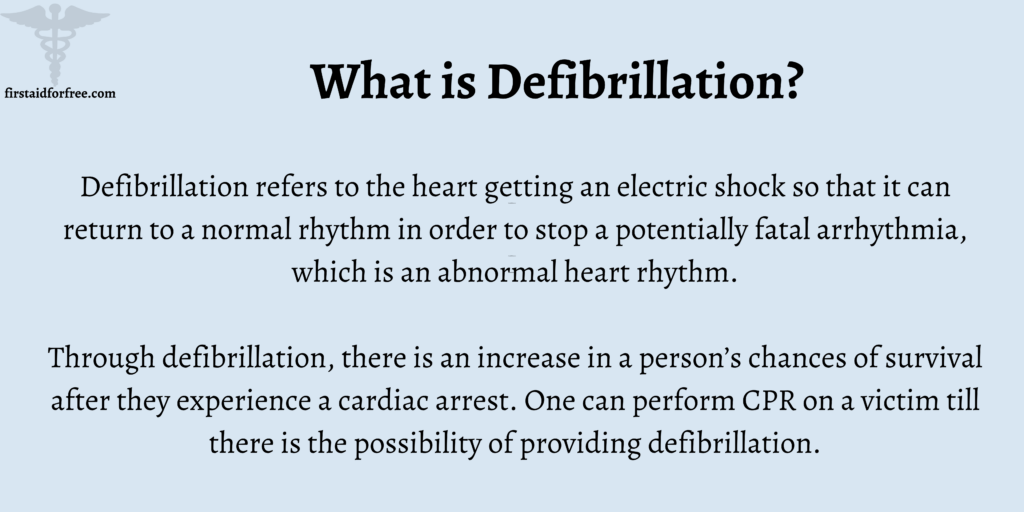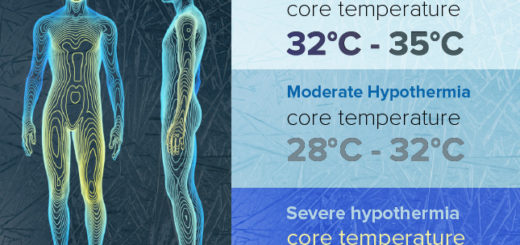What are the Two Shockable Rhythms in CPR?
Did you know that nine out of 10 victims of cardiac arrest live when they receive a shock from an AED during the first minute? Advanced cardiac life support involves deciding the right medication to use at the right time and also determining when to defibrillate.
An automated external defibrillator or AED is meant to analyze a patient or victim’s heart. In case there is the presence of a shockable rhythm, an AED helps in delivering a shock to someone who has suffered a cardiac arrest.
In my personal experience, the chances of survival of a person going through a cardiac emergency decrease as they wait for the arrival of the emergency medical services if they aren’t given CPR immediately.
By knowing how to use an AED, you can save a person in a time of crisis and help them stay alive till the arrival of medical help. For this purpose, it’s vital to know about shockable rhythms in connection with an AED.
Are you wondering what are the two shockable rhythms in CPR are? If yes, then we have got you sorted. In this article, we will be discussing shockable rhythms, non-shockable rhythms, and defibrillation.
What is Defibrillation?
Defibrillation refers to the heart getting an electric shock so that it can return to a normal rhythm in order to stop a potentially fatal arrhythmia, which is an abnormal heart rhythm.
Through defibrillation, there is an increase in a person’s chances of survival after they experience a cardiac arrest. One can perform CPR on a victim till there is the possibility of providing defibrillation.
What are the two Shockable Rhythms?

Let’s talk about the two shockable rhythms in an electrical-related cardiac arrest:
V-Tach
V-tach refers to ventricular tachycardia, and here is what you should know about it:
- Ventricular tachycardia is an abnormal heart rhythm wherein a person experiences an uncharacteristically fast heartbeat.
- A heart in v-tach will beat 100 times or over in a given minute.
- V-tach usually responds well to defibrillation.
- The appearance of v-tach on an ECG monitor will look like a really rapid, regular, and wide rhythm.
- Most of the patients who have this rhythm could be pulseless and unconscious. They could require multiple shocks while also needing adequate ventilation and competent compressions.
- If this rhythm doesn’t get terminated through defibrillation, the possible causes will have to be identified or else the treatment won’t work.
V-Fib
V-Fib is ventricular fibrillation, and here are the details to know about it:
- Ventricular fibrillation is an abnormal heart rhythm where the lower chambers of a person’s heart twitch but don’t provide an effective heartbeat.
- This usually occurs during or a while after a person experiences a heart attack.
- V-fib is the most common cause of sudden cardiac death and out-of-hospital cardiac arrest.
- The appearance of a v-fib on a monitor is that of a disorganized wavy line.
- V-fib can either be coarse or fine, with the possibility of the conversion of coarse ventricular fibrillation post-defibrillation being more than fine ventricular fibrillation.
What are Non-Shockable Rhythms?

Listed below are the non-shockable rhythms to make yourself aware of:
Asystole
- An asystole is when the electrical system of a heart has stopped working and the person has no heartbeat.
- It could happen due to untreated v-fib or v-tach.
- When someone experiences asystole, they should be given CPR right away to improve their chances of survival.
- If an AED detects an asystole rhythm, it won’t shock the patient. This is because defibrillation is not the correct treatment in this scenario.
Pulseless Electrical Activity
- Pulseless electrical activity or PEA is a type of irregular heartbeat.
- In this condition, a person’s heart stops because their heart’s electrical activity is not strong enough to make their heart beat.
- This arrhythmia can’t be treated with an AED. It requires immediate CPR to help the patient survive.
FAQs
Is asystole shockable?
No, asystole isn’t a shockable rhythm.
Is a VT shockable?
Yes, VT or ventricular tachycardia is shockable.
Can an AED detect PEA?
Yes, an AED can detect PEA.
What is defibrillation used for?
Defibrillation is used to restore a person’s normal heartbeat.
Who needs defibrillation?
Defibrillation is needed by those who experience sudden cardiac arrest.
Conclusion
The following are the key takeaways from this article:
- An AED is an important device associated with treating those who experience sudden cardiac arrest.
- There are different scenarios where an AED delivers a shock to the patient or does not deliver a shock to them.
- According to the rhythm an AED detects, it delivers a shock.
- Shockable rhythms are of two types, namely v-fib and v-tach.
- If the two shockable rhythms are detected, that’s when a patient receives a shock through an AED.
- There are two types of non-shockable rhythms, namely an asystole and PEA.






